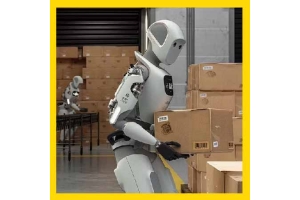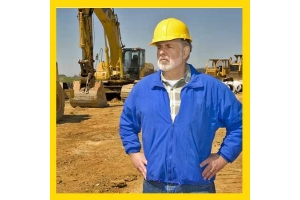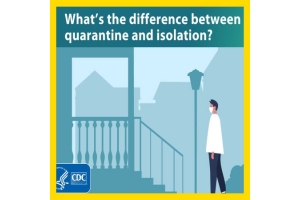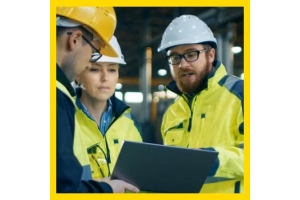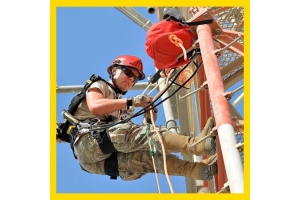Currency
-
September 26, 2022stand how to use multi-gas monitors when responding to natural gas or propane incidents.
NIOSH says fire departments should train their firefighters on how to interpret data from their specific multi-gas monitor to determine if a hazardous atmosphere is present. That includes low oxygen levels or dangerous levels of toxic gases such as carbon monoxide or hydrogen sulfide.
The advisory states that training should also cover:
- How to calibrate and maintain gas detection equipment by performing bump testing at the beginning of each shift.
- The use of gas detection equipment under a wide variety of conditions, including when at the lower explosive limit and upper explosive limit of a gas or vapor.
- How to use multi-gas monitor readings to establish isolation zones and ensure a continuous risk assessment is conducted throughout
-
September 26, 2022Alberta employer Joseph Ogden has been fined $80,000 after a worker fell to his death while repairing a balcony.
The incident happened on March 4, 2019 in Leduc, AB. Workers were conducting repair duties on a fourth-floor balcony. Suddenly, a worker fell into an unsecured railing and off the balcony.
Ogden, as an employer, pled guilty to Section 3(1)(a)(i) of the Occupational Health and Safety (OHS) Act, for failing to ensure their worker was protected from the hazard of falling. Ogden must also pay a 20-per-cent victim fine surcharge. The employer has also been placed on three years of enhanced regulatory supervision.
All other charges were withdrawn against Joseph Ogden. Also, all charges were withdrawn against Homefront Property Maintenance Ltd., according to the provincial government.
Fall protection must be a top consideration for employers in the workplace, according to the National Association of Safety Professionals (NASP).
-
September 26, 2022Heat stress is a problem for many workers. Agencies and organizations are working to educate workers and employers on the dangers of heat stress, as 43 workers died from exposure to heat in 2019, according to the Bureau of Labor Statistics.
A recently-published poll from the J.J. Keller Center for Market Insights looks more closely at this topic. The pulse poll asked questions about what factors contribute to heat stress and how companies are reducing it.
According to a news release about the poll, factors for heat stress in indoor and outdoor settings included heat from machinery and equipment (63 percent) and PPE (46 percent).
The actions respondents took to help reduce the potential for heat stress were to give employees water (93 percent), provide training on warning signs (90 percent) and provide breaks from the heat (86 percent). Additional actions include using “fans, ventilation, or reflective shields; cooling products; and providing shade.”
-
September 26, 2022Over the years, workplace safety has evolved from a focus on employee behavior and OSHA compliance to a focus on culture, safe conditions, and conformance with organization objectives. However, in order to achieve world-class safety performance, safety must be integrated into the culture of the enterprise. Companies that demonstrate a commitment to safety, and the well-being of their employee's lives, are actively demonstrating their dedication to a workplace culture that values health and safety. Overall, the organizations that prioritize safety and a “people first” approach rise to the top.
As a leader in the safety business, Wesco International has helped companies adapt to this evolving landscape for many years. Ines Sira, vice president and general manager of global safety at Wesco, has over two decades of business leadership experience in Fortune 500 companies, focusing on end-to-end global business leadership in healthcare, aerospace, workplace safety, and industrial markets, -
September 05, 2022Boca Raton, FL — Management commitment, communication and the setting of clear expectations are common elements of successful return-to-work programs for injured employees, according to a new report from the National Council on Compensation Insurance.
NCCI interviewed three employers – a health care system based in Colorado, a school district in Texas, and a construction and transportation infrastructure maintenance company in Alaska – to learn about their experiences with their respective return-to-work program, along with opportunities and challenges each face.
The report synthesizes the perspectives, along with those gathered from previous interviews with insurers, into these attributes of successful RTW programs:
- Management commitment needs to be foundational within the employer’s culture. Communication of this commitment builds trust
-
September 05, 2022A worker can experience a fall in the blink of an eye, caused by a momentary lapse in concentration, misplaced footing, reaction to an unexpectedly loud noise, slipping or simply loss of balance. Falls are the second leading cause of workplace fatalities. But they don’t have to be. There is a lot that can be done to prevent falls, and it all comes down to understanding the fundamentals of fall protection.
While there has been progress in recent years, falls from height remain a common cause of injury and death in industries such as oil and gas, construction, civil engineering, maintenance, scaffolding and utilities. Examples of when a worker may experience a fall include construction workers moving around a flat roof or a scaffolder putting platforms in place on the side of a building. No matter the environment, the safety of workers at height depends upon a process of rigorous risk assessments and detailed planning, followed by the application of best practice techniques and, -
September 05, 2022Four ways to keep your workers safe and cool while working in extreme heat.
The construction industry requires great attention to safety. For that reason, leaders must prioritize implementing company-wide practices to protect their workers.
At Rosendin, we rely on thousands of craft workers to successfully build some of the country's largest industrial and commercial projects. We have made it an ongoing mission to help our workers recognize dangers and protect them from harm of any kind. When completing projects in drier regions where heatwaves are common, such as Arizona and Texas, we also face the unique challenges that come with working in extreme heat.
Understanding the possible effects of working in hot weather and creating plans to avoid and handle any heat illness are essential elements of maintaining worker health. Rosendin has developed a comprehensive Heat Illness Prevention Plan to help workers across the nation follow safe practices.
-
September 05, 2022Safety professionals want employees to have good situation awareness and notice hazards before they’re affected by them, but sometimes it seems that the most obvious things get overlooked.
Why? The simple answer is tunnel vision, but what tunnel vision actually means is a bit more complex.
The American Psychological Association (APA) defines situation awareness as:
“(C)onscious knowledge of the immediate environment and the events that are occurring in it. Situation awareness involves perception of the elements in the environment, comprehension of what they mean and how they relate to one another, and projection of their future states. Situation awareness is influenced by a number of factors, including stress; it may be impaired by cognitive tunneling or social tunneling.”
Being able to perceive different elements and events in the environment, comprehending what they mean, how they relate and what they may lead to is important to workplace

